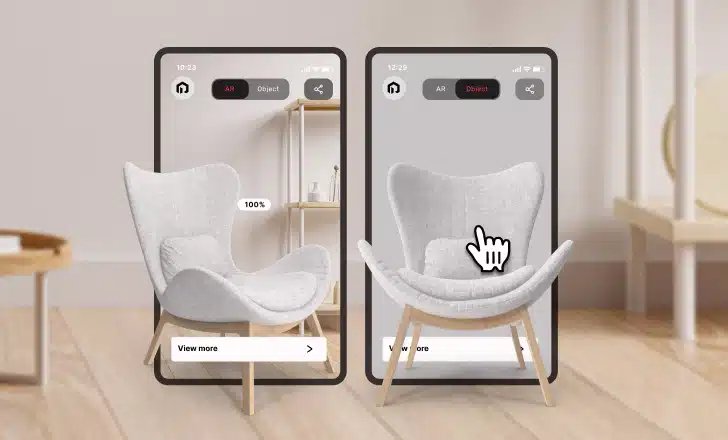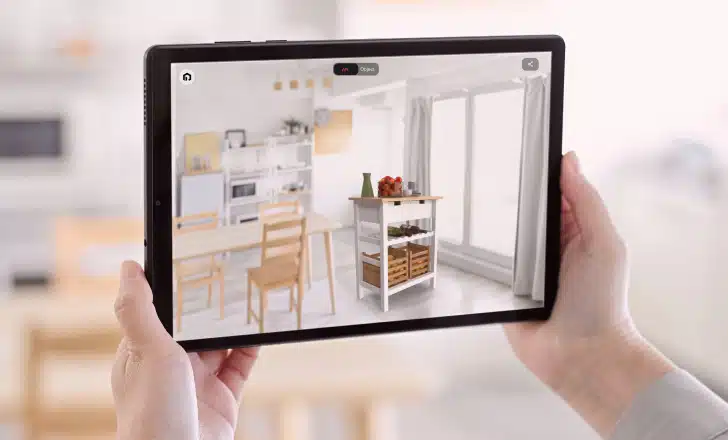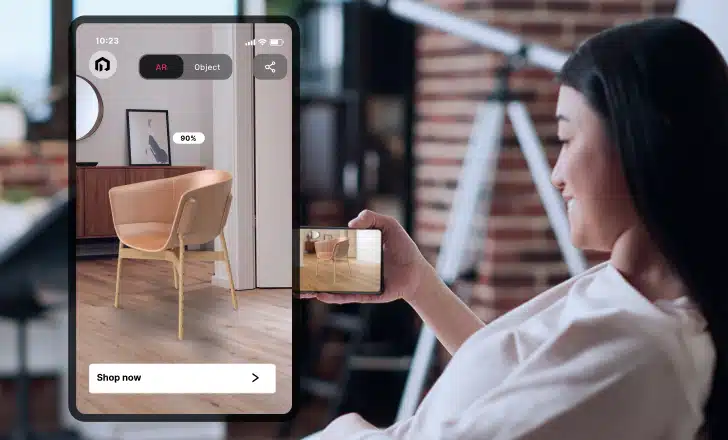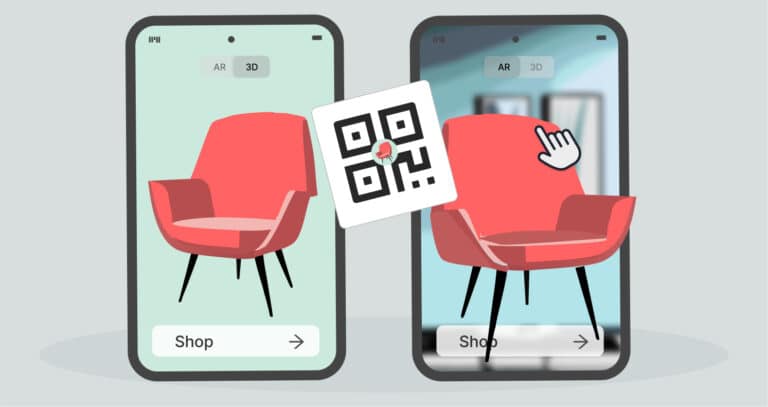Introduction
Each year, Salone del Mobile transforms Milan into a global stage for creativity, where the latest ideas in furniture and design come to life. It’s more than just a must-visit event—it’s a moment where the entire design world pauses to look forward.
For this year’s event, the spotlight isn’t only on what happens in the exhibition space, but also on how brands and designers are adapting to a more connected, tech-forward reality. The shift toward digital isn’t theoretical anymore—it’s happening now.
Whether it’s an immersive 3D experience or an interactive product preview, adding QR codes for Salone del Mobile opens the door to richer storytelling and stronger engagement. In this guide, we’ll look at how digital tools are reshaping the way we present, interact, and inspire—both in Milan and beyond.
Harnessing the power of QR codes for enhanced connectivity
At this year’s event, QR codes are doing more than simplifying check-ins—they’re becoming one of the most formidable tools at Salone del Mobile. With just a scan, visitors can jump from a physical exhibition space to a virtual showroom, explore augmented reality product views, or flip through a full exhibitor catalogue—all in real time.
A well-placed QR code for Salone del Mobile puts contemporary design, detailed information, and even parts of the purchasing process directly at your fingertips. It’s not just convenient—it’s what makes the Salone del Mobile platform feel alive and responsive.
In today’s hybrid world, where digital events and face-to-face experiences meet, QR codes help brands and exhibiting companies engage both the general public and industry insiders. They’re a sophisticated digital experience, a business tool, and a powerful way to let technology speak the language of design.ical showcases but also enhances visitor engagement and brand storytelling.

Creating immersive 3D and AR experiences
Augmented reality: Bringing designs to life
Augmented reality is changing how the design world shows off its ideas at Salone del Mobile. Instead of static product shots, visitors can now see how furniture or lighting would look in their personal areas—right from their phones. It’s not just more interactive—it makes the experience feel tailored and real.
When paired with QR codes, AR turns the exhibition space into a sophisticated digital experience. Attendees can view pieces from every angle, zoom in on details, or place items in their home environment—all while standing at a booth. It’s this fluid mix of virtual space and physical design that makes the event feel less like just an exhibition and more like a live design playground.
RealityMAX: A solution for immersive experiences
One innovative digital platform that designers and brands at Salone del Mobile should consider is RealityMAX. This platform specializes in creating lifelike AR experiences, allowing users to interact with 3D models of products in real-time. Integrating RealityMAX into your exhibition strategy can significantly enhance how your designs are perceived, providing an immersive experience that bridges the gap between the physical product and its digital potential.
ReIMAGINE: Elevating 3D visuals with AI-powered enhancements
Many designers are now using platforms like RealityMAX to bring 3D models to life. These tools let visitors interact with pieces in real time—no guesswork, just a direct look at how things might fit into their world.
When integrated with a QR code for Salone del Mobile, these platforms help bridge the gap between inspiration and understanding. A static booth becomes a dynamic moment—one that invites exploration, sparks ideas, and makes every design feel ready to live in.

Strategies for engaging digital and physical audiences
From virtual showrooms to digital twins of the exhibition space, brands at Salone del Mobile are finding new ways to stay connected—whether visitors are walking the halls in Milan or browsing from halfway across the world. These tools open the doors to the general public, offering full access without the need for a badge, flight, or schedule.
Layer in digital events like live Q&As, studio walkthroughs, or panel streams, and your brand presence stretches even further. In today’s hybrid world, this kind of content keeps audiences engaged—before, during, and after the show—while doubling as a sustainable option for global participation.
Tied together with a QR code for Salone del Mobile, these digital touchpoints become more than add-ons. They form a sophisticated digital experience that enhances your physical presence and lets your audience explore, interact, and come back for more.
Bridging the gap: Digital and physical worlds at Salone del Mobile
Augmented reality: A sophisticated digital experience
Augmented reality has become a cornerstone of the official Salone del Mobile platform, setting the stage for a truly sophisticated digital experience. By allowing visitors to place virtual products in their own homes, AR makes it possible for digital realms and the physical world to not just coexist—but to work together.
This innovative tool turns the exhibition space into an interactive canvas. Products don’t just sit on display—they come alive. For design enthusiasts and exhibiting companies, it’s a powerful shift in how we experience and share design.
When paired with a QR code for Salone del Mobile, these AR touchpoints help visitors move fluidly between physical displays and digital content, making this must-visit event feel more personal, more connected, and ready for the future of the design world.

Digital realms: Expanding the horizons of design
At Salone del Mobile, digital realms have moved from the sidelines to center stage. Thanks to the official Salone del Mobile platform, visitors can explore virtual showrooms, join digital events, and revisit their favourite content—all without setting foot in the exhibition space.
This new digital platform creates a lasting connection to the design world, where physical and virtual moments blend into one experience. For design enthusiasts, it’s a place to draw inspiration all year long. For companies, it’s a smart business tool—a way to stay visible, relevant, and engaged.
We’re not just witnessing a trend. This hybrid world signals a deeper shift: a future where digital realms coexist with real-world design—not as a fallback, but as the new way we speak design.
Future trends: The hybrid model of exhibitions
Looking ahead, the future of Salone del Mobile—and the broader design world—is unmistakably hybrid. As physical showcases meet digital enhancements, brands have more ways to connect, inspire, and adapt to whatever comes next.
This model isn’t a placeholder. It’s a lasting evolution that lets exhibitions reach wider audiences, offer more interactive experiences, and stay relevant in a world where change is constant. For anyone creating, curating, or exploring design, this is the direction everything’s moving toward—and it’s already happening.

Embracing sustainability through digital innovations
Shifting to digital platforms isn’t just about convenience—it’s a smarter, more sustainable way to exhibit. With tools like dynamic QR codes, virtual access, and digital events, companies can cut back on printed materials and reduce the need for long-distance travel.
For exhibiting brands, this approach offers the best of both worlds: a lighter environmental footprint and a stronger, more flexible way to connect with audiences.
Conclusion
For designers and brands heading to Salone del Mobile, tools like QR codes, virtual showrooms, and augmented reality are no longer optional extras—they’re key to making meaningful connections. Platforms such as RealityMAX help bring these ideas to life, offering immersive 3D experiences that let visitors explore and engage with products in real time and in real context.
This guide marks your first step into the hybrid world—a space where physical craftsmanship meets digital storytelling. Whether you’re unveiling the latest in contemporary design or simplifying the purchasing process, now is the time to explore how digital realms can elevate your presence at the world’s premier design event.
Because the future of design exhibitions isn’t coming—it’s already here. And it’s more connected, more interactive, and more powerful than ever.
